PICK OF THE MONTH
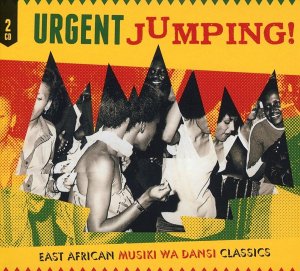 Various Artists
Various Artists
Urgent Jumping!: East African Musiki wa Dansi Classics (2 discs)
Sterns Africa (dist. Forced Exposure)
STCD3067-68
This brilliant compilation brings together 27 tracks that were big radio and dancehall hits in various parts of East Africa during the 1970s and 1980s, and features contributions from 21 bands hailing from Kenya, Tanzania, and Congo. The styles represented include benga, rumba, and soukous, and while the compilation is titled Urgent Jumping!, “urgency” is not necessarily the mood that these songs most often conjure up. Instead, they tend to be relatively slow in tempo, and their rhythms tend to roll and bubble rather than jump or pound. Even the more uptempo numbers are characterized by a sort of joyful refinement: tight polyphonic vocal harmonies, glittering guitar counterpoints, and gently insistent drums create a multilayered complexity that reveals new colors every time you listen, and the sung melodies are heart-tuggingly lovely. A few of these tracks are by large orchestras, and the instrumental features are not always the most compelling moments — but since the two-disc set sells at a single-disc price, the odd clunker is easy to forgive. Highly recommended to all libraries.
CLASSICAL
 Dmitri Shostakovich; Lera Auerbach
Dmitri Shostakovich; Lera Auerbach
Arcanum
Kim Kashkashian; Lera Auerbach
ECM
2375
Violist Kim Kashkashian and pianist/composer Lera Auerbach have teamed up for a very interesting program: the first half consists of Shostakovich’s 24 Preludes, op. 34, transcribed for viola and piano by Auerbach, while the second is a work by Auerbach herself, a sonata for viola and piano written for Kashkashian. The two pieces are very different, but together they make a satisfying whole: Shostakovich’s preludes present a fascinating blend of expressionism and classical form, tinged with that sense of angst and unsettled dread that always seems to hover over his chamber works. The Auerbach sonata is explicitly introspective, almost mystical in tone; harmonically, the slow movements float in an almost Debussy-like way while the one fast movement is agitated, with a tinge of bitterness. The playing is exceptional, as always from both of these musicians. Highly recommended overall.
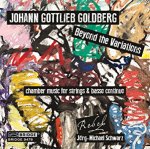 Johann Gottlieb Goldberg
Johann Gottlieb Goldberg
Beyond the Variations: Chamber Music for Strings & Basso Continuo
REBEL; Jörg-Michael Schwarz
Bridge (dist. Albany)
9478
To the degree that Johann Gottlieb Goldberg is known today at all, it’s mainly indirectly — as the keyboardist for whom Johann Sebastian Bach wrote a theme with a famous set of 32 variations. Goldberg was apparently a musician of startling virtuosity, able to sight-read complex compositions with great skill. However, he was less well-regarded as a composer, and reportedly destroyed a fair number of the works he did produce when they failed to live up to his high expectations. And then he died in his mid-20s, leaving only a handful of published compositions behind. These include the five trio sonatas for strings and continuo presented here by the very fine REBEL ensemble. The pieces themselves are, indeed, less than earthshaking, but all are very pleasant and the historical significance of this recording makes it well worth considering for classical collections.
 Arvo Pärt
Arvo Pärt
Kanon Pokajanen
Capella Amsterdam / Daniel Reuss
Harmonia Mundi
HMC 905274
First performed in 1998, Kanon Pokajanen (or “Canon of Repentance”) is a large-scale a cappella choral work by Estonia’s most famous living composer, and is the one that most strongly references the musical traditions of the Orthodox faith to which he converted in the early 1970s. Not only does he use the Church Slavonic version of the original text, but the harmonies that open the first section of this nine-part work have the slightly acerbic richness that characterizes so much Orthodox polyphonic chant. That sound alternates throughout the work with Pärt’s more static “tintinnabulation” approach, and the contrast is tremendously effective. Like so much of this composer’s music, there is a constant and productive tension between emotional intensity and serene devotion, and the singing by Capella Amsterdam is first-rate.
 Various Composers
Various Composers
French Flute Music: The Accent Recordings 1979-2003 (reissue; 10 discs)
Barthold Kuijken; various accompanists
Accent (dist. Naxos)
ACC 24312)
Rick’s Pick
 Georg Philipp Telemann
Georg Philipp Telemann
Music for Flute (reissue; 4 discs)
Barthold Kuijken; various accompanists
Accent (dist. Naxos)
ACC 24322
Rick’s Pick
For decades, Barthold Kuijken (of the famous Kuijken family of Dutch period-instrument practitioners) has been arguably the world’s foremost exponent of the baroque flute, the wooden and unkeyed precursor of the modern keyed metal flute. Many of his finest recordings were made between the late 1970s and the early 2000s for the Accent label, and a nice assortment of them are brought together in these two box sets. The first is a 10-disc collection that focuses on chamber works by French composers of the baroque era: Hotteterre, Couperin, Boismortier, Rameau, and others, and it includes Kuijken’s outstanding recording of flute quartets by François Devienne. The second is a four-disc box that features works by Georg Philipp Telemann: a set of twelve fantasias for solo flute, the twelve Methodical Sonatas, and a varied program of flute-centered chamber works plus one cantata. Kuijken’s tone and technical control are exemplary, but these two sets also make clear his admirable mastery of very different baroque styles: both the ornate and decorous sound of the French court, and the more serious and practical sound of German pedagogical music. He makes all of it glow with warmth, and these collections should be considered essential purchases for any library with a collecting interest in baroque music.
 Ludwig Van Beethoven
Ludwig Van Beethoven
Sonate op. 17 and op. A4; Serenata op. 41
Enrico Di Felice; Francesco Giammarco
Stradivarius (dist. Naxos)
37049
Rick’s Pick
The wooden flute persisted well into the classical and early Romantic periods, and this outstanding recording features three works by Beethoven for flute and piano, played on an early-19th-century wooden flute and on fortepiano by Enrico Di Felice and Francesco Giammarco (respectively). The unique sound of both instruments sheds new light on these late-classical works, and both of the musicians play with energy and insightful phrasing. This disc would make a very fine addition to any library’s classical collection, even if it doesn’t specialize in early music or period-instrument performance.
 Franz Schmidt
Franz Schmidt
Quintet in A Major for Piano Left-hand, Clarinet & String Trio
Linos Ensemble
CPO (dist. Naxos)
555 026-2
A rather strange composition by a rather strange composer, this quintet is one of several chamber works that Franz Schmidt wrote involving a piano part for left hand alone (written for Paul Wittgenstein, who had lost his right arm during World War I). The music itself is very much in the early-20th-century Viennese style — tonal but ambivalent about tonality, Romantically yearning but Teutonically rigorous in structure. The Linos Ensemble plays this five-movement work with a perfect sense of aching beauty.
 Josquin des Prés
Josquin des Prés
Missa Di dadi; Missa Une mousse de Biscaye
Tallis Scholars / Peter Phillips
Gimell (dist. Harmonia Mundi)
CDGIM 048
Rick’s Pick
A new recording of Josquin Masses by the Tallis Scholars is always cause for celebration — this group continues to set the standard for Oxbridge-style choral performance, and the music of Josquin is a particular specialty for them. The two Masses presented on their latest recording are something of a curiosity. For one thing, the various sections of the Missa Di dadi score are prefaced by a picture of dice showing numbers that tell the tenors how to distribute note lengths within the cantus firmus. For another thing, it’s not entirely certain that Josquin is the composer of these works, though both are traditionally attributed to him. The use of the dice motif may be puzzling and the attribution questionable, but there’s no question about the loveliness of both the music and (as always) the performances.
JAZZ
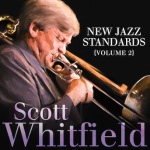 Scott Whitfield
Scott Whitfield
New Jazz Standards Vol. 2
Summit
DCD 683
Rick’s Pick
New Jazz Standards is the name of a published collection of compositions by trumpeter Carl Saunders, a highly in-demand session player also beloved by his peers for the exceptional quality of his writing and arranging. The first disc in this series of recordings featured flutist Sam Most; the second comes courtesy of trombonist Scott Whitfield, and it’s just as good. Saunders’ tunes are straight-ahead in style but highly inventive and harmonically original — listen past their pleasantly swinging surfaces and you’ll hear plenty of surprising changes. It would be interesting to know who the additional (and uncredited) horn players are on “Big Darlin'”, unless that was Whitfield himself being multitracked. In any case, this is a deeply and richly enjoyable album, one that will make an outstanding addition to any library’s jazz collection.
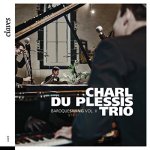 Charles du Plessis Trio
Charles du Plessis Trio
Baroqueswing Vol. II
Claves
50-1609
Baroque music, particularly the music of J.S. Bach, has proved irresistible to jazz musicians for decades now. I think it’s the combination of harmonic richness and rhythmic regularity: Bach’s countrapuntal lines are so much fun to play in straight rhythm that the temptation to makes those lines swing can just be kind of overpowering. This South African jazz trio was invited to do just that as part of a festival of baroque music held in Ernen, Switzerland, and it’s heartwarming to imagine the audience reaction (which, on the evidence of this disc, was warm after some initial hesitation; they clearly weren’t quite sure at which points they should clap). Du Plessis and his trio do an admirable job of balancing decorous respect for the baroque masters with a powerful sense of swing, and apart from one small misstep (an ill-advised boogie-woogie take on a Bach gigue) the album is an outstanding example of jazz-classical crossover.
 Buselli-Wallarab Jazz Orchestra
Buselli-Wallarab Jazz Orchestra
Basically Baker, Vol. 2: The Big Band Music of David Baker (2 discs)
Patois
PRCD022
For some reason, as I get older I find myself loving jazz more and more but getting less and less excited about the big band format. Part of my impatience probably stems from too much time spent listening to hotshot arrangers showing off their orchestration chops to the detriment of the tunes, and maybe part of it comes from a declining taste for bombast generally. But dang if this tribute to the great jazz educator David Baker didn’t win me over. His tunes are sharp; his arrangements are powerful but tasteful; the musicians involved (several of whom reportedly cancelled previous engagements when invited to play for this project) are audibly in love with the music. The first volume of this tribute series was actually recorded ten years ago and is being reissued in conjunction with this volume. Here’s hoping for more to come.
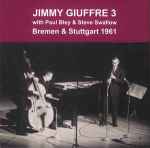 Jimmy Giuffre 3
Jimmy Giuffre 3
Bremen & Stuttgart 1961 (2 discs)
Emanem
5208
Rick’s Pick
Libraries with a collecting interest in free and improvised music should already be well aware of the scrappily tenacious Emanem label, which has released some of the most important (and often challenging) albums in the genre over the past few decades by artists like Steve Lacy, Derek Bailey, Eugene Chadbourne, and Anthony Braxton. This two-disc set brings back to market some long-deleted live recordings originally issued on the hatART label. All feature clarinetist and composer Jimmy Giuffre with his trio (bassist Steve Swallow and pianist Paul Bley) performing in Germany in the early 1960s, with a couple of tracks recorded in New York during the same period thrown in for good measure. All of them feature Giuffre’s trademark blend of composed and freely-improvised material, and also showcase his slightly dry and academic style, which was tempered by a willingness to get seriously out when the time came to do so. Swallow and Bley were perfect co-conspirators for Giuffre during this period, and these recordings are not only important but also thrilling. Essential for any comprehensive jazz collection.
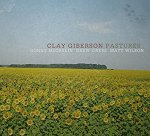 Clay Giberson
Clay Giberson
Pastures
Origin (dist. City Hall)
82724
As the title suggests, pianist and composer Clay Giberson’s latest outing as a leader draws on influences from American roots music — though those influences are often well below the sonic surface. His arrangement of the familiar Shaker hymn “Simple Gifts” takes that theme off in a million different directions, and his take on the Kern/Gershwin tune “Long Ago and Far Away” (which features a string quartet alongside his trio) is also quite creative. One of the highlight tracks is his original “Song for Ornette,” a composition that pays well-deserved tribute to Ornette Coleman’s gifts as a melodist (gifts that are often overlooked in the discussion of his pioneering efforts in harmolodics). Overall, this is a very fine program of modern jazz that can be confidently recommended to all collections.
FOLK/COUNTRY
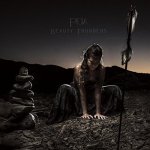 Peia
Peia
Beauty Thunders
Peia Song Music
10602773
Drawing on Celtic folk influences but also a bewildering welter of other traditions — the Balkans, South Asia, Basque Europe, Native America both North and South, etc. — Peia herself is a stylistic puzzle but her music offers a powerfully engaging listening experience. Her third album veers from the rollicking puirt a beul of “Ciamar A Ni M’in Dannsa Direach” to the atmospheric Andean folk of “Que Me Medicina” and “Txoria Txori,” with stops along the way for original songs. There’s a lot of eco-mysticism in here, and if that makes you roll your eyes, I get it. But try not to let it keep you from enjoying Peia’s astounding voice and her admirably adventurous approach to arranging.
 Courtney Granger
Courtney Granger
Beneath Still Waters
Valcour
VAL-CD-0033
Rick’s Pick
Most of those who recognize Courtney Granger’s name will be fans of Cajun music who know him from his stints in Balfa Toujours and the Pine Leaf Boys. But his debut solo album is a celebration of something different: 1950s and -60s-style honky-tonk country music of the George Jones, Buck Owens, Hank Cochran school. He memorializes these singers faithfully but not slavishly, putting his own stamp on classic songs like “Back in My Baby’s Arms Again,” “When a Man Can’t Get a Woman Off His Mind,” and the title track. And there’s more than a hint of Bayou two-step in a couple of these arrangements, which adds a little bit of extra spice to this rich and hearty stew of neo-trad country music. Very, very nice.
 Caleb Klauder & Reeb Willms
Caleb Klauder & Reeb Willms
Innocent Road
West Sound Music
No cat. no.
For some more traditional country sounds from a very different region of rural America, consider the Northwestern honky-tonk stylings of Caleb Klauder and Reed Willms. Klauder built his career in Portland, while Willms honed her style in eastern Washington, where she grew up in a family band and later became a bandleader in her own right. They met at the National Old-time Fiddle Contest in Weiser, Idaho, and their work as a duo is raw-boned and eclectic, with hints of Western swing and bluegrass mixed in. I like her voice better than his, but together they sound magnificent. Recommended.
 Various Artists
Various Artists
Feel Like Going Home: The Songs of Charlie Rich
Memphis International (dist. Select-O-Hits)
MIR 2028
If you only remember Charlie Rich for the 1970s schlock-country bedroom anthem “Behind Closed Doors” or the equally schlocky pop-country weeper “The Most Beautiful Girl,” then this tribute album might come as a surprise. Back in the day he was a mainstay of the Sun Records stable, and his early work was much more soulful and rockabilly-ish than his 1970s hits might lead you to expect. This tribute project brings together country artists as diverse as Shooter Jennings, Jim Lauderdale, and Will Kimbrough to celebrate all the stylistic threads of Rich’s eclectic career, and it’s tons of fun. It will also introduce you to some young artists you may not have heard of before.
ROCK/POP
 Chain Wallet
Chain Wallet
Chain Wallet
Jansen Plateproduksjon
10491879
Rick’s Pick
This is the debut album by a young pop trio from Oslo, Norway, and while the press materials advise that Chain Wallet’s songs explore “themes of betrayal, idleness and crushed dreams against the backdrop of an existential breakdown,” you’ll have to listen very hard to the lyrics in order to catch any of that. What comes across much more clearly is a blissful, dreamy melodicism buttressed by layers of shimmery guitars and vocals that are mixed into a sugar mist of dream-pop inscrutability. If this is the music they make while in the throes of existential breakdown, what do they sound like when they’re only depressed? Or (heaven help us) happy? Here’s looking forward to their sophomore effort.
 Machinedrum
Machinedrum
Human Energy
Ninja Tune (dist. Redeye)
ZENCD232
Rick’s Pick
From the infinite upward spiral of “Lapis” to the vocoder-laden, smiley electro-pop of “Color Communicator,” the latest album from Machinedrum (né Travis Stewart) is pretty much non-stop quirky fun — and certainly a far cry from what we heard on his last album (the much darker and more atmospheric Vapor City). But it’s still recognizably a Machinedrum album, with all of the attention to rhythmic and textural detail you’d expect, and all of the gleeful disregard for footwork, trap, and jungle norms. If you believe that electronic dance music should be as much fun to think about as it is to dance to, then Machinedrum is an artist you need to get to know better. Highly recommended to all libraries.
 Ray & Remora
Ray & Remora
Startle It Up
Aeronaut (dist. Redeye)
49
Rick’s Pick
This band’s debut recording was an EP of cover versions of songs originally released during the same year that Superchunk’s album Foolish came out. So — yeah. You might be forgiven for expecting the group’s first full-length album to be a little bit on the archly conceptual side. Never fear, though: instead, what you get is tuneful indie pop with an edge that is more serrated than jagged. It’s got electronic elements without being electro, and it partakes of hip quirkiness without being steeped in hipsterism. Hooks abound, which is the most important thing, of course. Note in particular the off-kilter loveliness of “Soft Brown Heart” and the acerbic jangle-pop bittersweetness of “The Happening.”
 The Legal Matters
The Legal Matters
Conrad
Omnivore
OVCD-197
During the winter, it’s important to keep a good supply of power-pop CDs in your car (or, fine, on your Bluetooth-enabled phones, whippersnappers) so you can drive down the road harmonizing along and pretending it’s summertime. Just in time for the turning of the seasons comes the second album from Detroit’s excellently-named The Legal Matters, whose crunchy guitars and blissfully lush vocals will touch your heart and whose melodies will burrow relentlessly into your ears and refuse to come out. There’s a hint of artiness on Conrad that I don’t recall hearing on their first effort, but it never overcomes the meat-and-potatoes pleasures of their songs. If your library’s Fountains of Wayne albums are always checked out, then maybe you should get two or three copies of this one.
 Bell X1
Bell X1
Arms
BellyUp
BU007W
Rick’s Pick
I really liked their last album, and this one is about twice as good. Irish indie-rockers Bell X1 have a sound that is dense in the middle but soft around the edges, with little crunchy bits mixed in, and they have a tendency to lure you in with lyrical sweetness and then poke you with a sharp jab of skronky polytonality or a startlingly out-of-place found-sound sample (or both, as in the case of the wonderful “Bring Me a Fireking”). Paul Noonan sings in a near-falsetto that makes him sound sad and whimsical at the same time — though how much of that is the weird lyrics themselves, I’m not sure. Anyway, this is tremendously winning and quirky pop music that really doesn’t sound like anything else I’ve heard this year.
WORLD/ETHNIC
 FLOX
FLOX
Homegrown
Echo Beach
EB117
The Anglo-French musician who goes by the name of FLOX promised his fans that his fifth album would consist of “100% nu-reggae,” and he was as good as his word: Homegrown is rock-hard modern roots reggae with shiny surfaces and a tough, dense rhythmic core — heavyweight rhythms underpinning songs that exhort the masses to self-determination while flipping the finger at The Man. The melodic hooks aren’t always razor-sharp, but “Find Some Joy” and “A Road” each offers a great earworm of a chorus. And while Amazon won’t tell you this, I have it on good authority that the CD version comes with a bonus disc featuring an additional 14 tracks. All libraries with a collecting interest in reggae should take note.
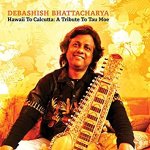 Debashish Bhattacharya
Debashish Bhattacharya
Hawaii to Calcutta: A Tribute to Taue Moe
Riverboat
TUGCD1100
Someday someone will write a truly fascinating book about how legendary Hawaiian guitarist Taue Moe introduced the slide guitar to India. In the meantime, there is this fascinating and thoroughly enjoyable album by Indian slide virtuoso Debashish Bhattacharya, on which he explores both the differences and the commonalities of the two cultures’ slide traditions. It’s the differences that are most obvious and most interesting here: the simple and achingly lovely melodies of the Hawaiian tradition as against the microtonally complex and virtuosic tradition of raga performance. Juxtaposing them makes for some startling shifts in tone, but only the swing-jazz adaptation of “Kaua I Ka Huahua’i” really falls flat. Sadly, that’s the final track — nevertheless, the album as a whole is strongly recommended to all world-music collections.
 Acid Arab
Acid Arab
Musique de France
Crammed Discs
cram272
The title of this album hints at the underlying defiance of Acid Arab, a multiethnic French ensemble that blends techno, house, electro-punk, and a wide variety of North African musical styles to create a sound that is arguably just as French as Charles Trenet’s music-hall stylings or Johnny Halliday’s Franco-rockabilly. You’ll hear nouveau raï (Sofiane Saidi’s “La Halfa”), Yemenite sister harmonies (“Gul l’Abi,” featuring A-WA), and Turkish trad-pop (“Still,” with Cem Yildiz) and lots of other stuff as well. The Acid Arab guys give everything a modern but gritty production, and the whole album is tons of slightly grim fun.
 Tiken Jah Fakoly
Tiken Jah Fakoly
Racines
Wrasse/Universal
9998075
Rick’s Pick
There’s no shortage of accomplished African reggae artists, but in too many cases they undermine their effectiveness by sanding down the music’s edges and making it just a bit too shiny. Tiken Jah Fakoly — whom I had never heard of until I was sent this, his tenth album — is apparently absolutely huge in Cote d’Ivoire, and I can see why. Personally, what I find most impressive about him are the way he incorporates African instruments and tonalities, and the way he makes his music sound simultaneously professional and gritty. His voice is very good but not good enough to explain his popularity: I would argue that it’s his arrangements that carry the day there. This album consists entirely of cover versions of classic reggae songs, a few of which you’ll recognize only when you notice that you’ve heard the words somewhere else before. His version of Burning Spear’s “Slavery Days” is absolutely hair-raising — you may not ever want to hear the original version again.
 Vandana Vishwas
Vandana Vishwas
Parallels
Self-released
VV003
Indo-Canadian singer and songwriter Vandana Vishwas has one of the loveliest voices in the world, and she also has a surprisingly broad range of musical tastes. For her third solo album she has written (in four cases) or selected (in one case) five songs and performs each of them in two radically different styles: “Mai Bequaid” is presented in flamenco and country styles; “Piya Na Mose Bole” in “traditional Indian” and New Age styles; “Dhula Dhula” in “African beats” and “Afro-Indian” styles; “Fiqr E Manzil” in ghazal and rock styles; and “Hum Gum Nuye” as a ballad and in an acoustic arrangement. Although I’m a big fan of Vishwas, I have to confess that I approached this album with some trepidation — particularly when I saw that one of the songs consisted of Sufi poetry set to a country accompaniment. But it all works better than I anticipated, and most of it is gorgeous. (The Sufi country track did actually turn out to be my least favorite.) Any library with a collecting interest in eclectic world music should definitely consider picking this one up.